As Rajant celebrates its 20th year anniversary of providing the military with a “Combat Proven Solution,” we would like to highlight historical milestones for both the Army and Rajant. The highlight is the deployment of more troops in support of Operation Iraqi Freedom (OIF), which later became “The Surge,” engineered by GEN Petraeus and his staff at the Multi-National Force- Iraq (MNF-I) headquarters.
The intent of “The Surge “was to move soldiers from the large sprawling Forward Operating Bases (FOBs) into the neighborhoods to demonstrate our willingness to protect Iraqis from violence. During the early months of 2007, “The Surge” coincided with the beginning of the largest counter-fire fight of the war, combating the increased IDF was the Counter Rocket Artillery Mortar (C-RAM) Program had been deployed since 2005 to defend servicemembers, government officials, and civilian contractors from Indirect Fire (IDF) attacks by insurgent forces.
As the government in Iraq was reestablished, the newly formed government wanted the commercial radio bands returned to civilian use. The C-RAM office had to replace the existing Motorola radios with a radio that could operate in commercial and military bands.
Rajant competed against three other companies and was selected to provide radios for the C-RAM architecture. Commercial customers have successfully used their InstaMesh® Rajant radios for mine operations, oil refineries, and heavy construction sites. The addition of the military band transceivers was done rapidly and with precision to meet the deadline set by the Army.
For the Army, the Rajant radios provided a scalable and user-friendly solution (some Forward Operating Bases had over 500 nodes). They could move real-time safety-critical C-RAM data to provide Warning and Intercept IDF attacks.
An added benefit of the Rajant radios for the Army was that they were user-friendly in operation and maintenance. C-RAM teams were spread across Iraqi FOBs supporting service members, government civilians, and civilian contractors. The C-RAM soldiers
were deployed in teams of junior Non-Commissioned Officers (NCOs) and soldiers. They were not signal soldiers but, in the case of 2007, Air Defense Artillery (ADA) soldiers. Additionally, some of the soldiers were also Individual Augmentees (IAs) who were volunteers since the C-RAM program was not a program of record and there were no official C-RAM units. The teams were alone on the FOBs protecting lives and equipment. As mentioned, the C-RAM program was not a program of record; therefore Rajant had to establish a training program that would be implemented prior to their deployment. Brigadier General Dan Montgomery, US Army, Ret. Remembers.
“Rajant coming on really made a huge difference. Rajant and the capabilities they provided just made things go smoothly. We really ended up saving a lot of lives over the course of time.”
The selection of Short-Range Air Defense (SHORAD) as the primary Army home for the C-RAM program created a requirement for an encrypted radio to protect data during combat deployments. The Rajant corporation, the C-RAM program office, and Northrop Grumman teamed to introduce the Huntsman radio as the base for the protected network required by the Army. From our beginnings, the Rajant Corporation has had a history of innovation and customer-centric solutions rather than a “build, and they will come” attitude. The creation of the Huntsman radio is a perfect example since we introduced our team to a military-encrypted solution that our civilian customers do not require. Within a short period of time, we introduced, tested, and deployed the Huntsman radio. Colonel David Shank, US Army, Ret., says dependability is key regardless of the environment. “The Importance of Rajant’s capabilities and the radio systems they provided, and having the ability to communicate, whether it’s during peacetime, whether it’s in a combat environment, contested versus uncontested, is of extreme importance, and Rajant does that for the Army.”
Rajant is very proud of our accomplishments within the C-RAM program since our radios became an integrated solution for combat operations. The reason for that pride is that seldom does a company have the privileged to be introduced to an existing program replacing a key component and deploying to support combat operations specifically to save lives and national treasures. Colonel Tony Pucket, US Army, Ret., has larger vision for Rajant,.
“If I could, Rajant would be everywhere in the kill chain, except for distances where you need HF or something. But it would be throughout the field artillery. It’s just that good of a product. And the Kinetic Mesh net ability is really a leap above.”
Due to our success with the C-RAM program and our demonstrated ability to quickly provide innovation to combat scenarios to the Army in 2016, Rajant became the primary radio for the Counter Unmanned Aerial Systems (CUAS) efforts to deal with an
exponential increase in drone threats. To increase the speed of getting the effectors (kinetic and signal) to the battlefield, The Army decided to have effectors fall in on the C-RAM architecture and the Rajant network. Because of the high bandwidth requirements of the CUAS effort, Rajant was able to quickly provide existing higher bandwidth radios to meet the urgent deployment timelines.
The above mentioned programs will allow Rajant to remain committed to the Army for the next 20 years. Our legacy of providing the Army with a “Combat Proven Solution” will continue to grow and protect all deployed in harm’s way.













